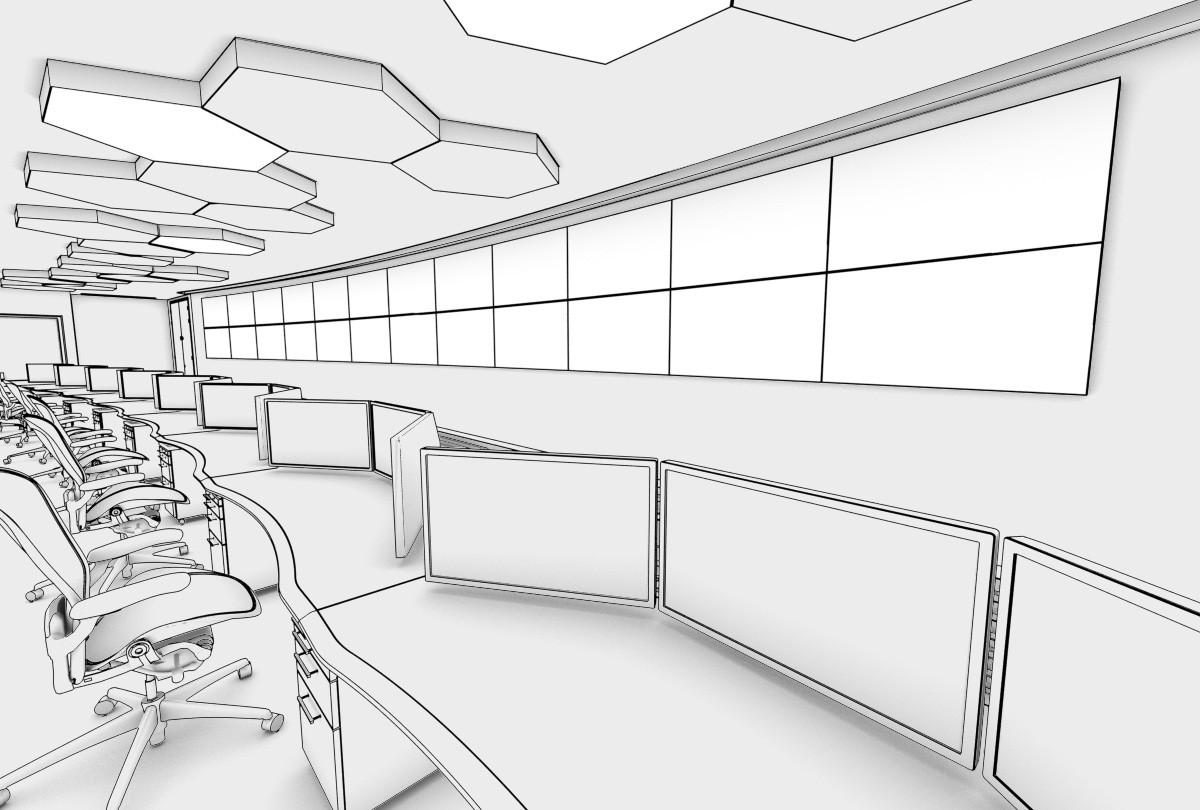In part 1 of our series on the Rules of Operations Center Video Wall Design, we explored sight line analysis and the various methods Constant Technologies uses to determine ideal sizing and placement of video walls.
In addition to size and placement, another major component of video wall design is determining what display technology to use. Because a video wall in a mission critical environment is a significant installation, it is important to weigh the pros and cons of each of the major display technologies available in the professional 24/7 display market. As mission critical AV integrators, Constant Technologies helps determine the best technology and installation for your video wall.
LCD vs LED
Video walls built for 24/7 use are created using LCD or LED display technology. LCD video walls have been popular for years and are the main display type used in the mission critical market due to their relative affordability and high resolution displays. LED video walls are energy efficient and can be used as tiles to create a relatively seamless video wall display.
One of the significant differences between LCD and LED displays is the pixel pitch, which is defined as the distance between each pixel. Said Danny Sasseville, Vice President of Project Engineering at Constant, “The bigger the pixel pitch is, the farther away you have to be to see it clearly.” LED video walls have fewer pixels than LCD video walls, so the pixel pitch is greater for LED. Sasseville confirmed that typically, LCD displays are installed more frequently than LED displays due to their lower cost and higher resolution when viewed from close distances. However, moving forward we will begin to see LED video walls more frequently in command centers as both the pixel pitch and price continue to decrease.
Though LEDs have greater pixel pitch and are frequently more expensive, there are some advantages to choosing LED over LCD. LCD displays, though they have greater clarity from a close distance, have bezels which can be seen between the panels of a video wall. “The LCD video walls we install do have very thin bezels, as thin as 5 or 3 mm,” said Sasseville. “But with LED displays you don’t have that visible edge.”
Added Senior Design Engineer Neil Medeiros, “Even with a thin bezel, you still see the lines on an LCD display wall; with LED, there are no visible seams in the wall.” The margins in LED dispays are smaller, and more facets can be used for a more precise, tight curve when creating curved video walls.
4K and What it Means for Your Installation
4K video walls are frequently discussed in the industry, but are also easily misunderstood. “4K is simply the amount of pixels in a display – about 4,000 – when measured horizontally,” said Sasseville. “It’s a technical definition.” Nearly every installation of a video wall is technically 4K, since enough screens are combined to create the pixel amount required by the definition. An advantage of 4K is that with a video wall processor, one 4K image can be displayed across the entirety of the video wall. 4K displays are a popular choice because the resolution and picture quality are unmatched, with four times the resolution of full HD.
In addition to 4K video walls, there are also a number of 4K standalone displays, which are standard, single displays in true 4K with a mullion around the edge. These are frequently used for monitors placed at operations center consoles or as displays in an adjoining conference room or huddle space.
With 4K display technology, it is important to ensure that all hardware and cabling infrastructure is built to process 4K signals. It is also key to consider what will be displayed on the 4K video wall. “The tough part with 4K,” said Sasseville, “is that there’s not really any source content specifically made for it yet. Most of the content is upscaled, which means a video scaler is used to double the pixel amount. It’s a lot of processing.” However, according to Sasseville, 4K is quickly going to replace HD as the new standard for monitors and video. In fact, while 4K is still emerging as a technology, the industry has already started to look ahead; infrastructure is already being put in place for the eventuality of 8K video walls.
Curved Video Wall Installations
Another display wall consideration is whether to install a flat or curved showpiece video wall. Depending on the architectural design of the space and the client’s preferences, a curved video wall might be the best display option for an operations center. While curved digital displays are manufactured, they are not made for the professional AV industry. Most pre-curved displays are more suited to digital signage applications and are not 24/7 rated displays. Additionally, it is not practical to use a curved digital display for a video wall, as the curve of the wall would have to be built out to the exact angle of the display’s curve. Instead, the designers and installers at Constant create a curved video wall by using LED or LCD displays as tiles, arranged to form a curve at the angle that best fits the existing space. Due to essentially non-existent edges, LED display tiles make for a seamless curved effect at 24/7 rated quality.
The team members at Constant Technologies are experts at mission critical video wall integration and operations center design. We will help you decide which technology is the best fit for your space – LED, LCD and 4K – and determine whether your video wall would function better as curved or straight. Contact us today for a free design consultation.
About Constant:
Constant Technologies, Inc. is a premier audio visual integrator providing mission critical video wall installation, audio visual integration and custom furniture solutions worldwide. With over 3 decades of experience, its seasoned team has access to and experience with sensitive environments, such as Cyber Defense and Homeland Security. Constant designs, installs and services projects of any scope to create solutions with the highest levels of security, aesthetics and functionality.
Our team works within a range of operations center environments including:
- Command Centers
- Network Operations Centers (NOC)
- Security Information Centers (SIC)
- Security Operations Centers (SOC)
- Cyber Operations Centers
- Cyber Security Operations
Centers (CSOC) - Fusion Operations Centers
- Emergency Operations Centers (EOC)
- Joint Operations Centers
(JOC) - Tactical Operations Centers
(TOC) - Combined Operations Centers (COS)
- C4ISR Environments
- Social Media Command Centers
- Conference and Situation Rooms
- Control Rooms
- Collaborative Spaces
We offer professional mission critical video wall integration and custom technology furniture installation to provide your team with a space to operate efficiently and effectively.
Admin
November 1, 2017

